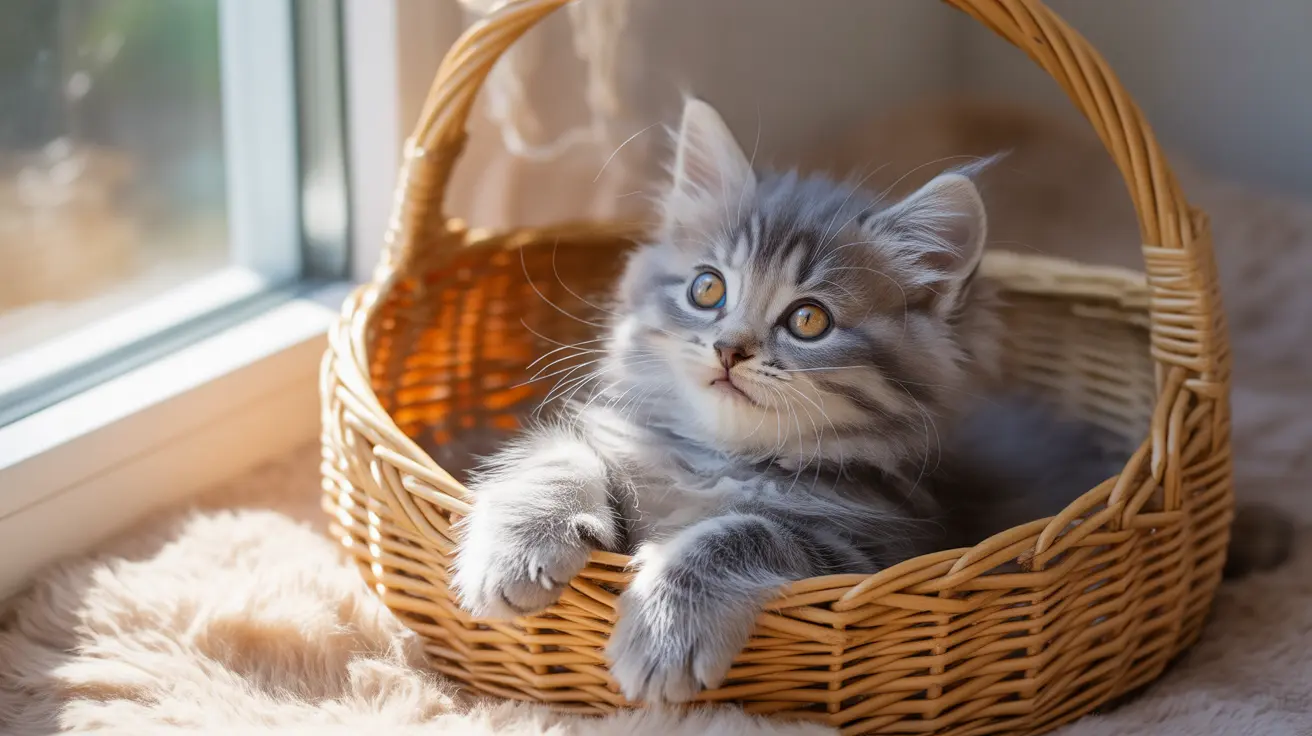All kittens are born with beautiful blue eyes, but this isn't their permanent color. As these tiny felines grow and develop, their eye color undergoes a fascinating transformation that reveals their true genetic traits. Understanding this process helps pet owners know what to expect and when to be concerned about their kitten's eye development.
In this comprehensive guide, we'll explore the timeline of kitten eye color development, what influences the final color, and important signs to watch for during this crucial period of growth.
The Early Stages of Kitten Eye Development
Kittens enter the world with their eyes sealed shut, protecting their delicate visual systems. Beneath those closed lids lies a cloudy blue color, which is visible once their eyes open between 7-14 days after birth. This initial blue shade isn't their true eye color - it's simply due to the lack of melanin in their developing irises.
The Eye Color Change Timeline
First Signs of Change (3-8 Weeks)
Around three weeks of age, you may notice the first subtle shifts in your kitten's eye color. The initial blue begins to fade or darken as melanin production increases in the iris. This process can vary significantly between individual kittens, even within the same litter.
Peak Color Transition (6-8 Weeks)
The most dramatic changes typically occur between six and eight weeks. During this period, you might observe your kitten's eyes taking on hints of their adult color, whether that's green, gold, copper, or another shade.
Factors Influencing Final Eye Color
Genetics and Breed
A kitten's final eye color is primarily determined by genetics. Certain breeds are known for specific eye colors:
- Siamese cats retain their blue eyes
- Russian Blues develop emerald green eyes
- Persians often have copper or golden eyes
- White cats may develop different colored eyes (heterochromia)
Melanin Production
The amount of melanin produced in the iris determines the final eye color. Higher melanin levels result in darker colors like copper or gold, while moderate levels create green eyes. Some cats maintain blue eyes due to genetic factors that limit melanin production.
Monitoring Your Kitten's Eye Development
While eye color changes are normal during the first few months, certain signs warrant veterinary attention:
- Sudden color changes after 4 months of age
- Discharge or cloudiness
- Uneven color development between eyes
- Signs of discomfort or squinting
Frequently Asked Questions
When do kittens' eyes typically start to change from blue to their permanent color?
Kittens' eyes typically begin changing color around 3-8 weeks of age, with the first noticeable shifts appearing as subtle changes in the blue shade.
How long does it take for a kitten's eye color to fully develop?
Most kittens develop their permanent eye color by 12-16 weeks (3-4 months) of age, though some may take slightly longer to reach their final shade.
What factors influence the final eye color of a kitten?
The final eye color is primarily determined by genetics and breed, with melanin production in the iris playing a crucial role. Breed-specific traits and inherited genes are the main factors.
Why do some cat breeds, like Siamese, keep blue eyes into adulthood?
Siamese cats retain blue eyes due to a genetic mutation that affects melanin distribution in their bodies, including their eyes. This trait is specifically linked to their breed genetics.
When should I worry if my kitten's eye color changes suddenly after 4 months?
Any sudden eye color changes after 4 months of age should be evaluated by a veterinarian, as this could indicate an underlying health issue or eye condition requiring treatment.
Understanding your kitten's eye color development helps ensure they're growing healthy and strong. While this change is a natural part of feline development, staying informed about the process helps you identify any potential concerns early on. Remember to enjoy this special time watching your kitten grow and develop their unique features, including their beautiful permanent eye color.






